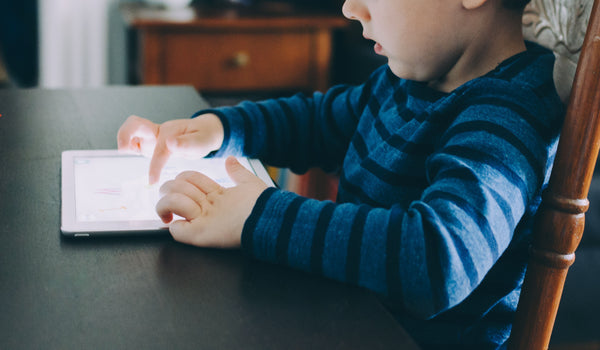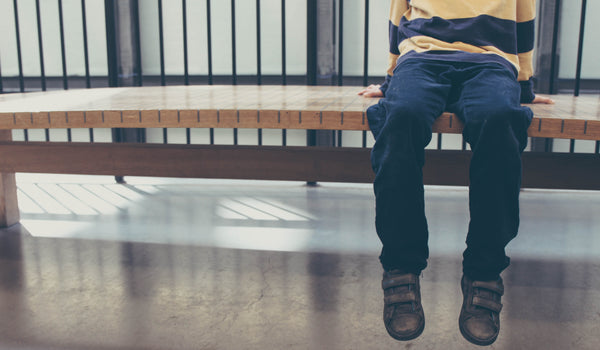Does Your Child Live in a High-Conflict Environment?

There's a lot of pressure on children these days. From the everyday stresses involving academics and social interactions at school to anything stressful in the home environment... the pressure can really build up. If a child is exposed to high-conflict situations at home or in school, it can have a detrimental impact on overall health and development. Whether it's bullying at school, or trying to drown out fighting in the home, there are some proven ways to teach children how to cope in any environment.
How High-Conflict Environments Impact Children
When it comes to high-conflict environments at school, research shows us that bullying has the power to change the brain and cause a child to become more susceptible to developing a mental illness later in life. A study conducted by Erin Burke Quinian at King's College London found that consistent bullying caused not only psychological disturbances but also led to structural changes in the brain. These changes in the brain are attributed to the increased risk of mental illness. High-conflict home environments have also been found to change the brain and increase the risk of mental health issues.
Severe or chronic conflict in the home has been found to disrupt early brain development in infants as early as six-months-old, children, and adolescents up to 19-years-old. It can also lead to imbalanced sleeping patterns, depression, anxiety, conduct disorder, difficulties forming bonds with peers, and managing emotions. Not every child who is in a high-conflict environment will surely experience the worst of these consequences, however. Genetics and resiliency play a role in how severely a child will be impacted, as does emotional intelligence and coping skills. Females tend to be at a greater risk of developing emotional problems, while males are more likely to develop behavioral issues. In cases where a child has a genetic predisposition for mental illness, it's family life that can determine which way the scale will tip.
In addition to facing developmental, emotional, social, and psychological disturbances, children who are repetitively exposed to high-conflict environments are more prone to developing physical illnesses, stomachaches, and headaches. It also impacts their cortisol levels while causing difficulties with concentration and academic performance. Sibling relationships may also be impacted by these environments, and have a tendency to be either overprotective and over-involved in nature, or disengaged and distant.
While high-conflict environments don't always include fighting parents, this is the most common scenario children face. While a mere argument will not have a negative impact on a child, arguing that turns into fighting and destructive conflict does. This is especially true when it's about a child. This can cause kids to internalize the conflict and blame themselves—leading to depression, substance abuse, and self-harm later in life.
Destructive conflict includes:
- name-calling and insults
- threatening to leave
- physical violence
- the silent treatment
- withdrawing, avoiding, or walking out
- pouting
- giving in without resolution
Tips for Helping Children Cope in a High-Conflict Environment
It's not always possible to control the type of environment children are exposed to every day. Teachers and counselors cannot always be with children at home, and parents cannot always be with their children at school. Nevertheless, there are some ways parents, teachers, and loved ones can help them to cope with being in a high-conflict environment.
While it's completely normal to get into arguments, it's important to refrain from using any destructive conflict tactics. Furthermore, whenever a disagreement occurs, it's helpful for children to see its resolution. Teaching healthy ways to manage conflict, compromise, and express emotions during a disagreement are healthier than hiding them from a child. This helps kids learn how to manage their own emotions when interacting with peers.
Some other tips for supporting children in high-conflict environments include:
- checking in with them
- practicing healthy communication skills
- refraining from criticizing others (especially a parent)
- keeping children out of any fights (do not ask them to take sides, and do not vent to them)
- teaching children to manage anger and other intense emotions
- asking for help (from parents, teachers, counselors, therapists, etc.)
Children are sponges and experts at analyzing conflict and discord. If parents and mentors are able to instill such healthy practices in kids and provide them with the tools they need to manage conflict and express emotions successfully, they're doing them a great service. Some wonderful tools to help kids identify emotions include My Moods, My Choices flipbooks, posters, mood magnets, and mood bands.
Jayna Nickert, MBA, MFT, is a writer, integrative therapist, and entrepreneur residing in San Diego, CA. When she isn't writing or playing with her dogs at the beach, she enjoys helping children and adolescents. As a therapist in a prep school setting, she's equipped junior high and high school students with the tools needed to process and manage symptoms of depression, anxiety, stress, bereavement, and trauma.
Also in Blogs

“What's On?” The Impact Of Media On Kid's Emotional Well-being

Parenting a Child with ADHD: 3 Sure-Fire Strategies for Better Communication

